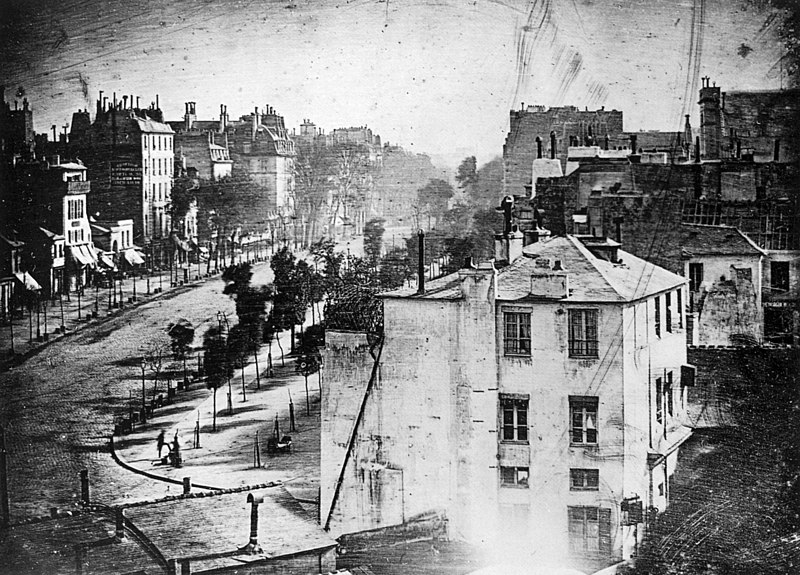- It hadn’t always been this way. For hundreds of years, a painted portrait was supposed to look like the person it portrayed. Even especially talented and artful portrait painters — like Hans Holbein the Younger (c. 1497-1543) — had to think of portraits primarily in terms of a good likeness. Holbein’s portrait of Christina of Denmark (1537) is, for instance, an especially beautiful painting. Her hands are the best part. That’s because of the way she grasps a glove between her two hands, the index and middle finger of the left hand intersecting gently with the fingers of the right. Christina’s face is impassive, hard to read. Her hands, though, reveal a tremendous vulnerability. When you look at those hands, you are forced to like Christina of Denmark.
The author here already knows the answer to your headline (which he conveniently included in his version!) but the essay still reads as a nice introduction for people who might be confused when they encounter the abstract experiences of modern painting. Without a bit of historical art education, the arc painting has taken since the 19th century feels opaque, especially since modern media culture often embraces the transparency of photography. Ultimately, though, I tend to bristle at the stark dichotomy between painting and photography which the author presents here, although I think he hints at some openings in that division at the end of the essay. I think this was in someways due to the nascent photographic technology, which had difficulty finding "realism". First, consider one of the earliest photographs, a daguerreotype called "Boulevard du Temple" from 1838: I'm not sure the author even addressed issues of reproducibility with respect to mass media/pop culture, and today's technology (I'm looking at you photoshop) has only continued the expansion and blurring of what could be considered photographic space. It seemed clear to me that this essay was written by a painter, not a photographer, as he is happy to note the subtle, varied and sometimes drastic shifts apparent in painting, while not really applying the same nuanced analysis to the history of photography. Towards the end it seems like he's making the argument that somehow painting is stealing realism back from photography, when I think photography has been on it's own journey and in many ways, abandoning realism just as much as painting has been reclaiming it. Regardless, thanks for the post, it was an interesting read! Visual truth-telling had previously been the domain of painting. You can see this in looking at early photographs. Photographs from the mid 19th century often have the look and feel of paintings. This makes perfect sense if you think about it. People in the 19th century were used to looking at painted scenes. Early photography therefore had to fulfill the expectations of eyes trained by seeing painted pictures.
 The similarities with painting are immediately clear, from the variations in the surface of the image, dramatic chiaroscuro, to the surreal empty streets of metropolitan Paris, populated by only two lonely figures, a shoe shiner and his customer. I don't think these similarities were necessarily borne out of a desire to imitate painting, although later photographers certainly noticed and capitalized on painterly techniques in photography. Second, consider Edgerton's photographs, from the mid-20th century. Here is a photograph of the detonation of a nuclear bomb:
The similarities with painting are immediately clear, from the variations in the surface of the image, dramatic chiaroscuro, to the surreal empty streets of metropolitan Paris, populated by only two lonely figures, a shoe shiner and his customer. I don't think these similarities were necessarily borne out of a desire to imitate painting, although later photographers certainly noticed and capitalized on painterly techniques in photography. Second, consider Edgerton's photographs, from the mid-20th century. Here is a photograph of the detonation of a nuclear bomb:  or his famous 1964 image of a bullet fired through an apple:
or his famous 1964 image of a bullet fired through an apple:  As technology changed and improved, I think it became more apparent that photography was not just imitating realistic paintings, or imitating human vision, but it's a unique way of seeing the world and it's relationship to "realism" is not clear cut.
As technology changed and improved, I think it became more apparent that photography was not just imitating realistic paintings, or imitating human vision, but it's a unique way of seeing the world and it's relationship to "realism" is not clear cut.
Glad you enjoyed the read.The author here already knows the answer to your headline (which he conveniently included in his version!)
-FWIW, I used the "submit to hubski" button and the title that auto-populated was "The Smart Set -Face Off." -I added the rest of my title without realizing that the author had a similar subtitle, or else I would have gladly included his "of course not."
Nice read. One aspect that draws me to paintings is the powerful connection between artist and product. Not all paintings have it, and not all photographs don't, but generally speaking, the paintings that I appreciate most are those in which the artist is part of the subject matter. A John Singer Sargent is a John Singer Sargent. Paintings that take time typically capture the artist, with the exception of photorealism. I believe a voice in painting typically means developing something wonderful that your paintings capture without you consciously putting it in.